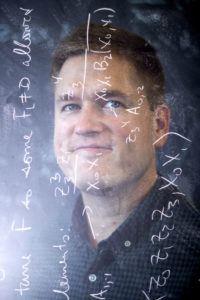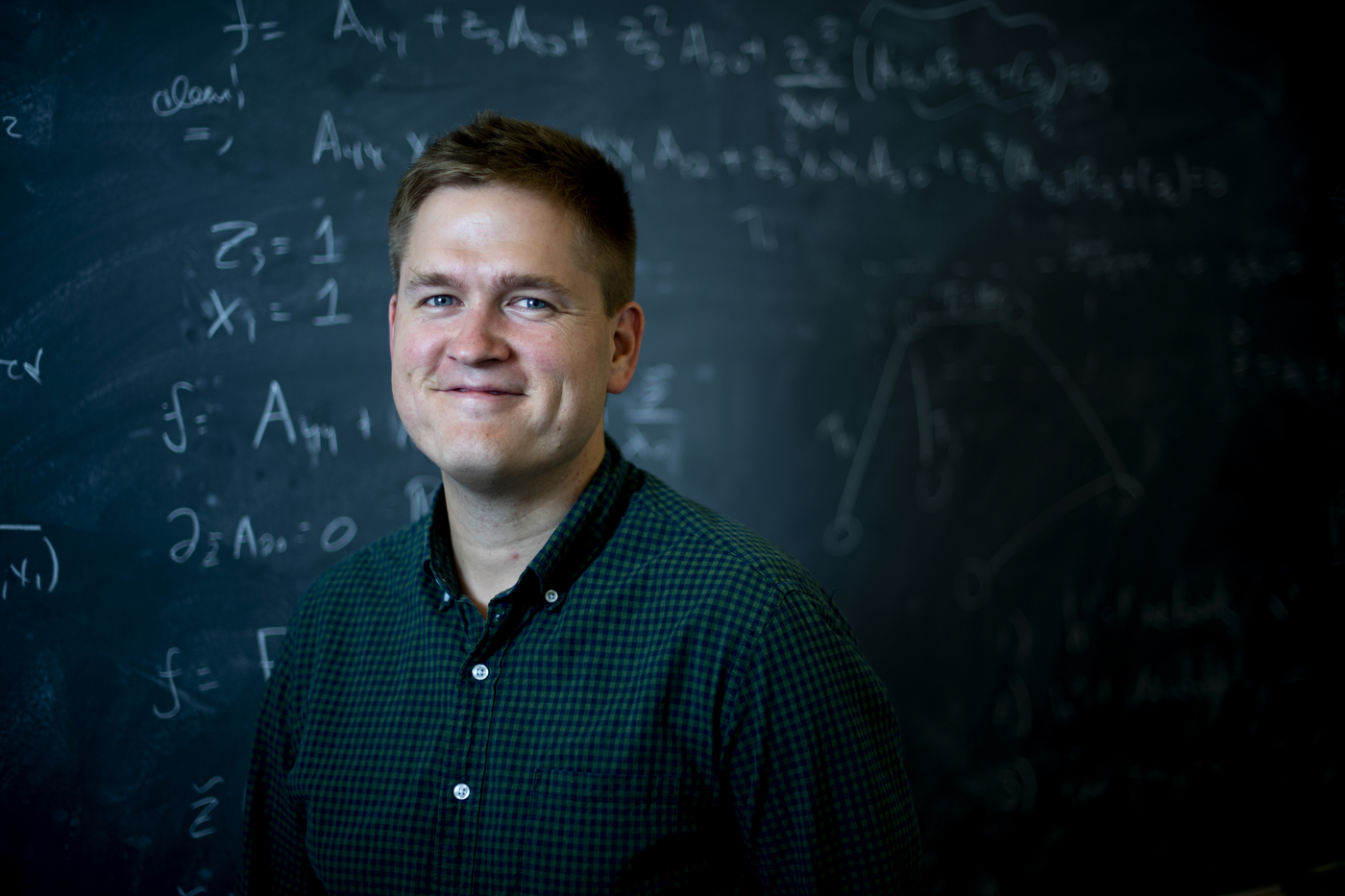Machine learning has percolated into many scientific disciplines that deal with large data sets—even those that grapple with theoretical data. James Halverson, an assistant professor of physics at Northeastern, is using data science to study the fundamental laws of physics that govern the universe.

“String theory is not a settled subject,” says James Halverson, an assistant professor of physics at Northeastern. “This is a complex problem, so we need not just modern techniques from mathematics, but also modern techniques from computer science.” Photo by Matthew Modoono/Northeastern University
Halverson studies string theory, which predicts that the universe is made up of tiny, thread-like loops of concentrated energy called strings. In addition to mathematical approaches, Halverson is looking to machine learning to help overcome computational hurdles in string theory.
“String theory is not a settled subject,” he says. “This is a complex problem, so we need not just modern techniques from mathematics, but also modern techniques from computer science.”
String theory also predicts that there are extra dimensions beyond the four dimensions that we experience every day: time and three dimensions of space (forward/back, up/down, left/right). These theoretical extra dimensions are hard to visualize, and there are many possible ways that these various geometries could be folded in on themselves and hidden in our universe.
Over the past 30 years, Halverson says scientists have increasingly recognized the large number of possibilities in string theory and the potential role of computer science in this field. In the past few years, researchers like Halverson, who was recently granted a five-year National Science Foundation CAREER award to advance this work, began using cutting-edge data science techniques to study this large set of possibilities. The idea is that eventually, they may be able to parse patterns in this data and understand the implications of these possibilities.
For Halverson, the opportunity to collaborate has been a highlight of this work.
“Part of the fun of this new direction is that I’m actually talking to a much broader array of scientists than I ever have,” he says. “There have been a number of meetings with people from different types of physics and machine learning where we’re all just in a room together talking about different ideas. And that’s a thrill.”
Applications of machine learning in other scientific fields have also inspired Halverson. While laboratory experiments run by biologists, for example, little resemble the research he leads as a theoretical physicist, there are parallels in the techniques they use to analyze data from complex systems.
“The way that proteins fold is actually a pretty good analogy to some of the problems that we run into in string theory,” he says. “Though no complex system out there is going to be a perfect analogy, we might be able to draw some inspiration from what people are doing in other fields.”
Halverson is also interacting with leaders in the tech industry to help them engage with physics research and explore potential scientific applications of the techniques they’ve developed. In April, he helped organize a meeting between researchers from machine learning and physics at Microsoft’s headquarters outside Seattle.
“To my knowledge, it was the first-ever string theory meeting in collaboration with industry,” Halverson says.
Using data science to learn more about the large set of possibilities in string theory could ultimately help scientists better understand how theoretical physics fits into findings from experimental physics. Halverson says one of the ongoing questions in the field is how to unify string theory with experimental findings from particle physics and cosmology, which he describes as “the physics of the smallest of the small and the biggest of the big.”
These questions are far from simple, but Halverson says the unknowns are what drew him to this field in the first place.
“There are big puzzles left unanswered, and trying to crack them is what drives us as theoretical physicists,” he says.
This story was originally published on News@Northeastern on August 5, 2019.

